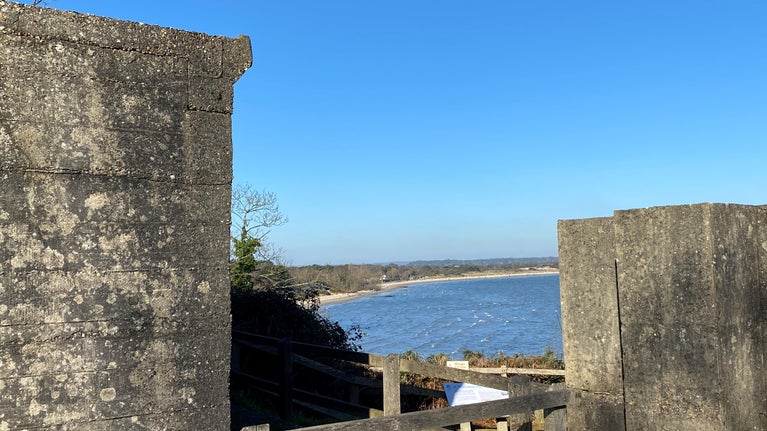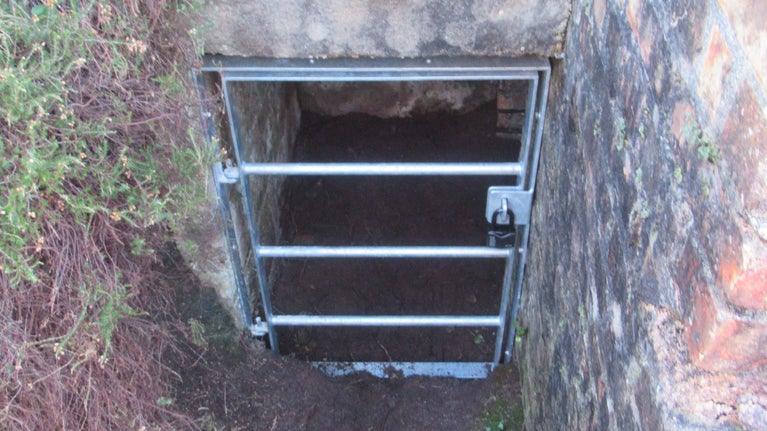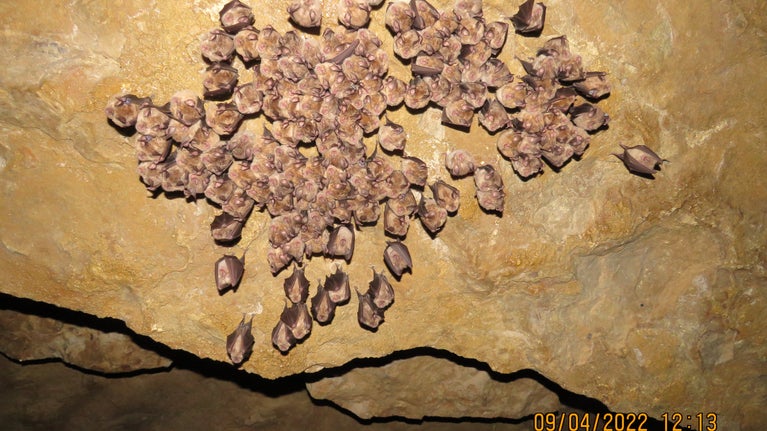Bats hunker down in wartime bunkers
- Published:
- 17 February 2025
- Last updated:
- 17 February 2025

New defences have been added to Fort Henry and three other World War Two bunkers in Studland – not to safeguard our shores, but to protect the rare bats that roost there.
Metal grilles have been installed on the historic structures to prevent people from entering the areas where bats are roosting (this doesn’t include the main observation platform at Fort Henry). The project has been led by the National Trust, working with the Dorset Bat Group.
Michelle Brown, National Trust ecologist, said: “This is one of many projects across Dorset that volunteers from the bat group are helping us with – and we are hugely grateful for their support. Roost checks and monitoring with acoustic detectors have already identified five species of bat using the bunkers, so it’s great to know that these bats are now safe.”

The species identified in the Godlingston Heath bunkers are the common pipistrelle, soprano pipistrelle, long-eared bat and a type of mouse-eared bat (the detectors didn’t identify exactly which one). Fort Henry is being used by greater horseshoe bats. The concrete bunkers are ideal hibernation sites because bats need cold, humid places with a stable temperature, and sheltered from the rain and wind. Regular monitoring will also establish if the bunkers are being used in the summer.
Michelle added: “Purbeck is already an important place for bats, with 15 of 17 breeding UK bats found here. But bats are under threat nationally from many things including building work, pesticides and lack of insects (their food source). So, we want to be doing all we can to understand and protect these fascinating creatures.”

The grilles were designed and installed by Colin Morris, known as the ‘bat man’ because of his dedication to these protected animals. He constructed the grilles with horizontal bars, with enough space between them for one of the biggest of our bats, the greater horseshoe, to fly through.
The acoustic bat detectors can identify most bats by their sounds, but they can’t determine the number of bats using the bunkers. This information is gathered by monthly check-ups when members of the Dorset Bat Group go into the bunkers, under licence, and do a count.
People can help bats in their own homes and gardens by planting night-scented flowers, such as evening primrose and honeysuckle, that will attract moths (favourite food for bats). Garden ponds give bats a source of drinking water and flying insects. Installing bat boxes can also provide them with safe roosing sites.
Find out more about the the Dorset Bat Group and how you can get involved.
